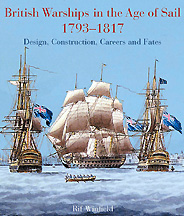Seven ships of the Royal Navy have been named HMS Sirius after the brightest star in the night sky.
Thirteen ships of the British Royal Navy have been named HMS Surprise or HMS Surprize, including:

The Slave River is a Canadian river that flows from the confluence of the Rivière des Rochers and Peace River in northeastern Alberta and empties into Great Slave Lake in the Northwest Territories. The river's name is thought to derive from the name for the Slavey group of the Dene First Nations, Deh Gah Got'ine, in the Athabaskan language. The Chipewyan had displaced other native people from this region.
Indfødsretten was a 64-gun ship of the line in the Royal Dano-Norwegian Navy commissioned in 1787. She was one of a class of five ships designed and constructed by naval architect Henrik Gerner.
Two ships and two establishments of the Royal Navy have been named HMS Impregnable:

HMS Pegasus was a 28-gun Enterprise-class sixth rate. This frigate was launched in 1779 at Deptford and sold in 1816. Pegasus had a relatively uneventful career and is perhaps best known for the fact that her captain from 1786 to 1789 was Prince William Henry, the future King William IV. By 1811 Pegasus was a receiving ship at Chatham; she was sold in 1816.

The Océan-class ships of the line were a series of 118-gun three-decker ships of the line of the French Navy, designed by engineer Jacques-Noël Sané. Fifteen were completed from 1788 on, with the last one entering service in 1854; a sixteenth was never completed, and four more were never laid down.
Six ships and a shore establishment of the Royal Navy have been named HMS Hannibal after the Carthaginian leader Hannibal:
In France, under the Ancien Régime, the Gardes de la Marine, or Gardes-Marine were young gentlemen undergoing training to be naval officers. The training program was established by Cardinal Richelieu in 1670 and lasted until Admiral de Castries abolished it in 1786.

Centaure was a 74-gun ship of the line of the French Navy, launched at Toulon in 1757. She was designed by Joseph-Marie-Blaise Coulomb and named on 25 October 1755, and built under his supervision at Toulon. In French service she carried 74 cannon, comprising: 28 x 36-pounders on the lower deck, 30 x 18-pounders on the upper deck, 10 x 8-pounders on the quarterdeck, 6 x 8-pounders on the forecastle.

Pégase was a 74-gun ship of the line of the French Navy, lead ship of her class, launched in 1781.
Three ships of the Royal Navy have been named HMS Aquilon, to commemorate the destruction of the French ship Aquilon by HMS Antelope in 1757. Aquilon was originally the Roman name for the North Wind.
The 71st Regiment of Foot was a regiment of infantry raised in 1775, during the American Revolutionary War and unofficially known as Fraser's Highlanders. It was disbanded in 1786.

British Warships in the Age of Sail is a series of four books by maritime historian Rif Winfield comprising a historical reference work providing details of all recorded ships that served or were intended to serve in the (British) Royal Navy from 1603 to 1863. Similar volumes dealing with other navies during the Age of Sail have followed from the same publisher.
John St Barbe (1742–1816) was a prominent English shipbroker and shipowner whose vessels were active in whaling, the transport of convicts, and in the slave trade.
Canada was launched at King's Yard in 1779 for the Royal Navy, which sold her at the end of the war. Unfortunately, her name while in Royal Navy service is currently unknown. John St Barbe purchased her and named her Adriatic, but renamed her Canada c.1786. She made three seal hunting and whaling voyages between 1791 and 1799 under that name, and was lost at South Georgia in 1800 on her fourth.





